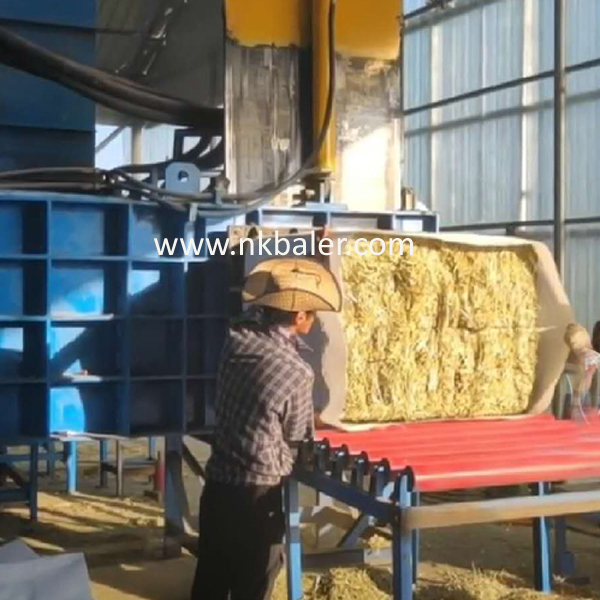The processing and utilization of straw baling feed is increasingly important in livestock breeding.Its small volume and large capacity are significant advantages;the bulk density of general loose forage and straw is 20-50 kilograms per cubic meter, but after being pressed into blocks, the bulk density reaches 800-1000 kilograms per cubic meter, facilitating storage and transportation, and reducing the risk of combustion. Under ventilated, moisture-proof, and waterproof conditions, the shelf life can be 2-3 years or longer.The palatability is excellent; the pressed block feed has a unique rich paste aroma, good palatability, high degree of maturation, and serves as an effective appetizer. It can also reduce metabolic diseases and benefit livestock health.The nutritional content is good, with a high digestion and absorption rate. Generally, the crude protein content of pressed block feed can reach over six percent, equivalent to the nutritional level of medium-quality forage.The intake rate can exceed ninety-nine percent, and the digestion and absorption rate can reach over sixty percent.Feeding losses are minimal. The loss from feeding loose grass is about thirty percent, from feeding grass bundles about fifteen percent, while pressed block feed loses less than one percent, improving feed utilization and saving on feeding costs.Feeding is convenient. Pressed block feed can be fed either wet or dry, saving labor, effort, time, and facilitating mechanized feeding.It reduces pollution.
The comprehensive utilization of straw returns it to the field after passing through the digestive system, achieving a virtuous agricultural cycle, reducing the use of chemical fertilizers and pollution, and enhancing the benefits of crop farming.The manual straw baler is a kind of equipment used for compressing and baling straw in agricultural machinery, which is convenient for storage and transportation.
Post time: Jul-31-2024
